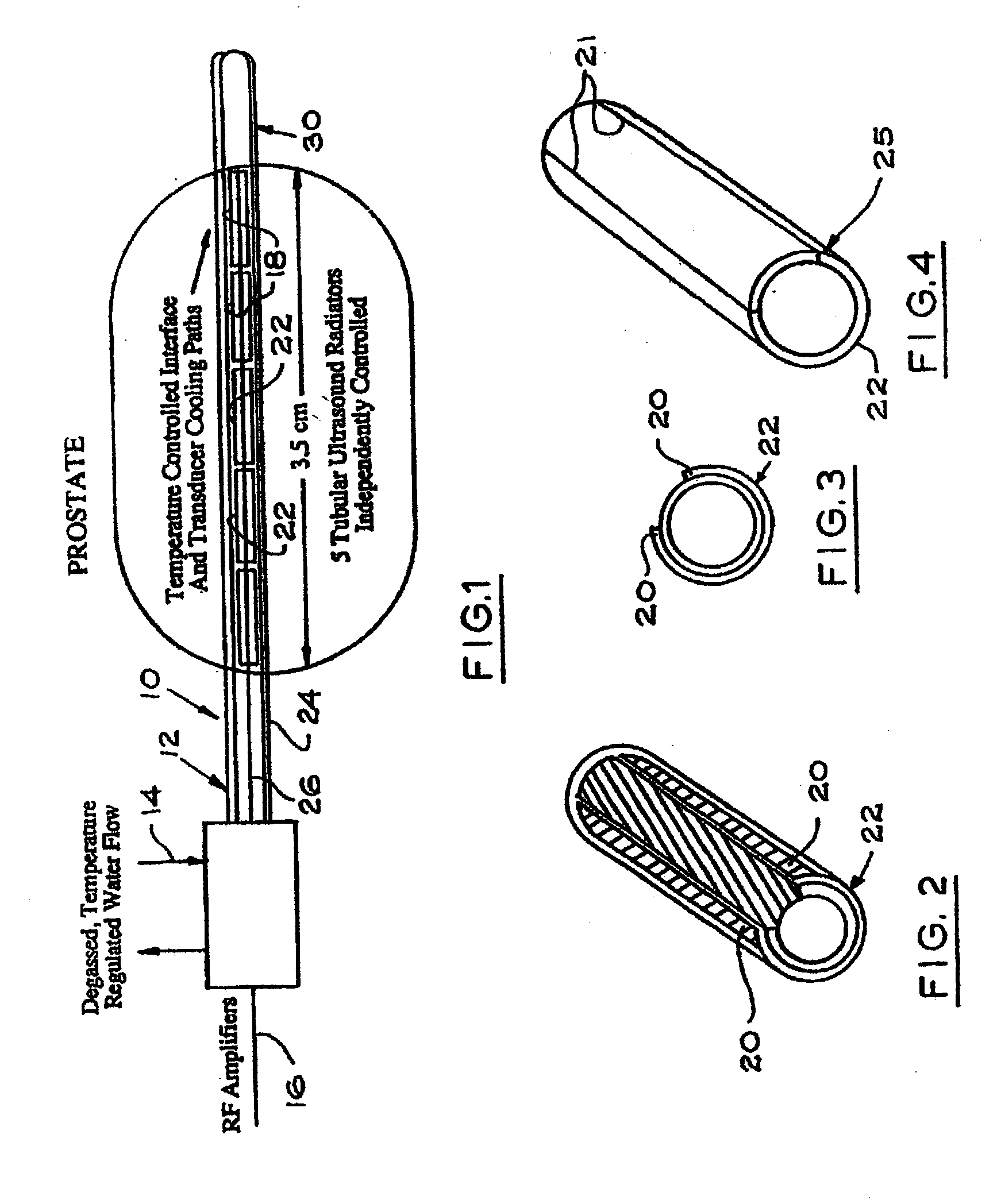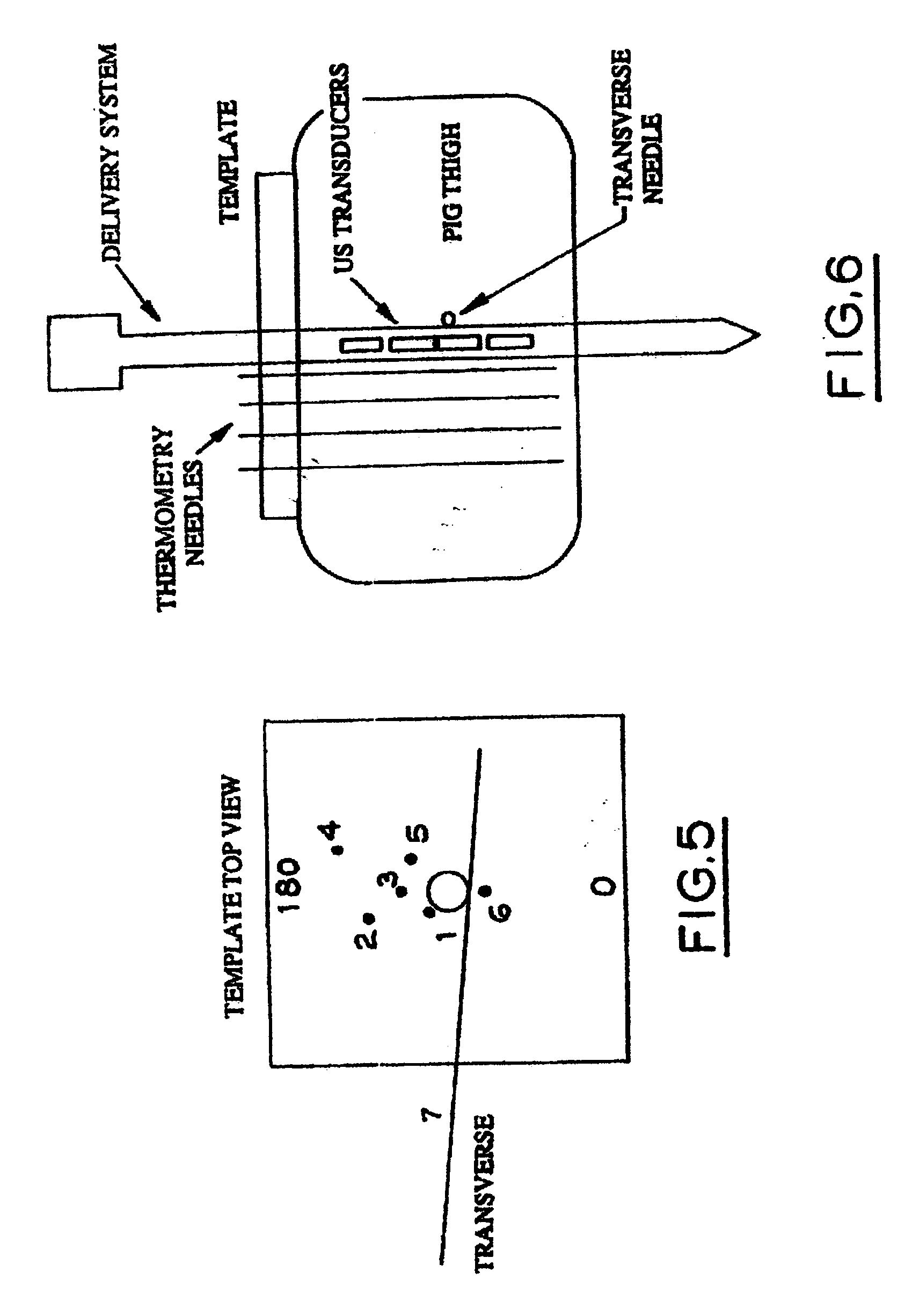Method of manufacture of a transurethral ultrasound applicator for prostate gland thermal therapy
a technology of transurethral ultrasound and prostate gland, which is applied in the field of new apparatus and methods for heating the prostate gland, can solve the problems of significant blood loss, badly needed progress, and insignificant improvement, and achieve the effect of high ultrasound energy output on target tissues
- Summary
- Abstract
- Description
- Claims
- Application Information
AI Technical Summary
Benefits of technology
Problems solved by technology
Method used
Image
Examples
example
[0058] In accordance with this form of the invention, a transurethral multielement ultrasound applicator was used as a means of improving heating penetration, spatial localization, and dynamic control to afford better treatments for cancer and BPH. This structure provided longitudinal control of heating to cover the anterior-lateral portion of the prostate while sparing the region around the rectum and verumontanum. Computer simulations, acoustic measurements, and in vivo thermal dosimetry studies confirmed the usefulness of this form of the invention.
[0059] For a nonlimiting, illustrative example, prototype applicators were fabricated with four tubular transducer elements (each 6 mm long, 2.5 mm OD) attached to form a segmented array. Separation between elements was approximately 0.5 mm. Each transducer was modified to produce uniform coverage of the anterior and lateral portions of the prostate and to ensure that no acoustic energy would be delivered to the rectum during clinical ...
PUM
 Login to View More
Login to View More Abstract
Description
Claims
Application Information
 Login to View More
Login to View More - R&D
- Intellectual Property
- Life Sciences
- Materials
- Tech Scout
- Unparalleled Data Quality
- Higher Quality Content
- 60% Fewer Hallucinations
Browse by: Latest US Patents, China's latest patents, Technical Efficacy Thesaurus, Application Domain, Technology Topic, Popular Technical Reports.
© 2025 PatSnap. All rights reserved.Legal|Privacy policy|Modern Slavery Act Transparency Statement|Sitemap|About US| Contact US: help@patsnap.com



